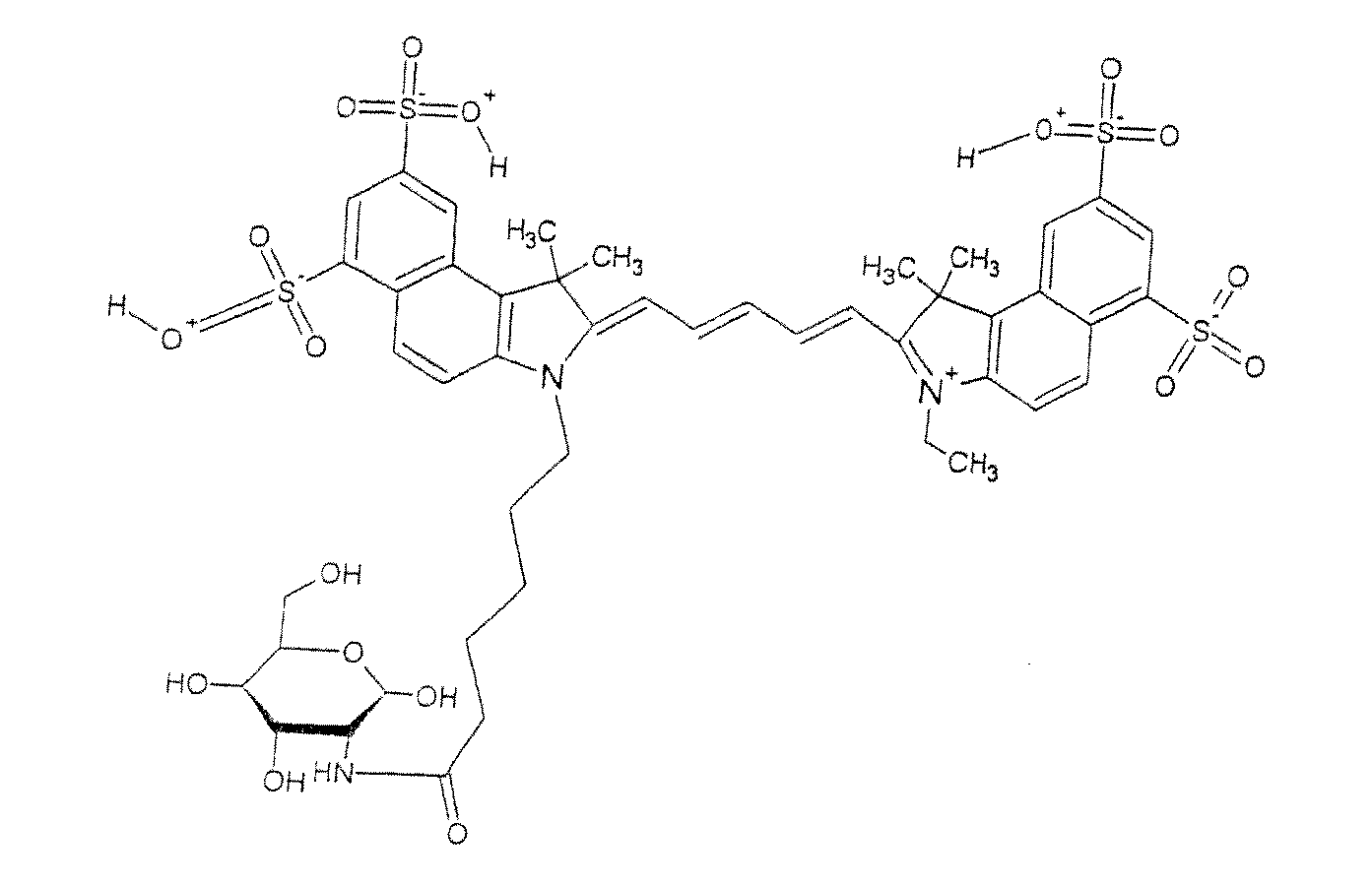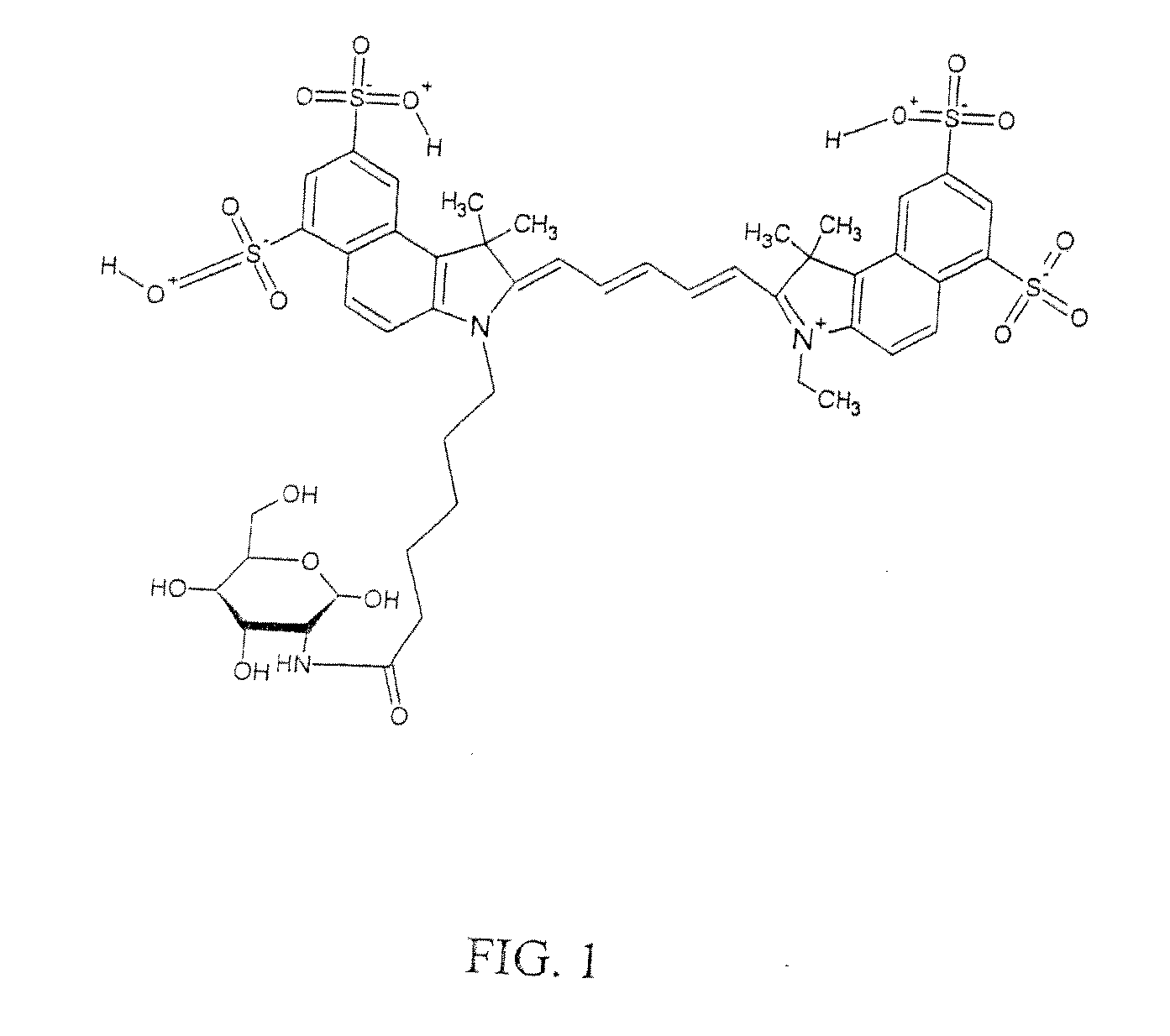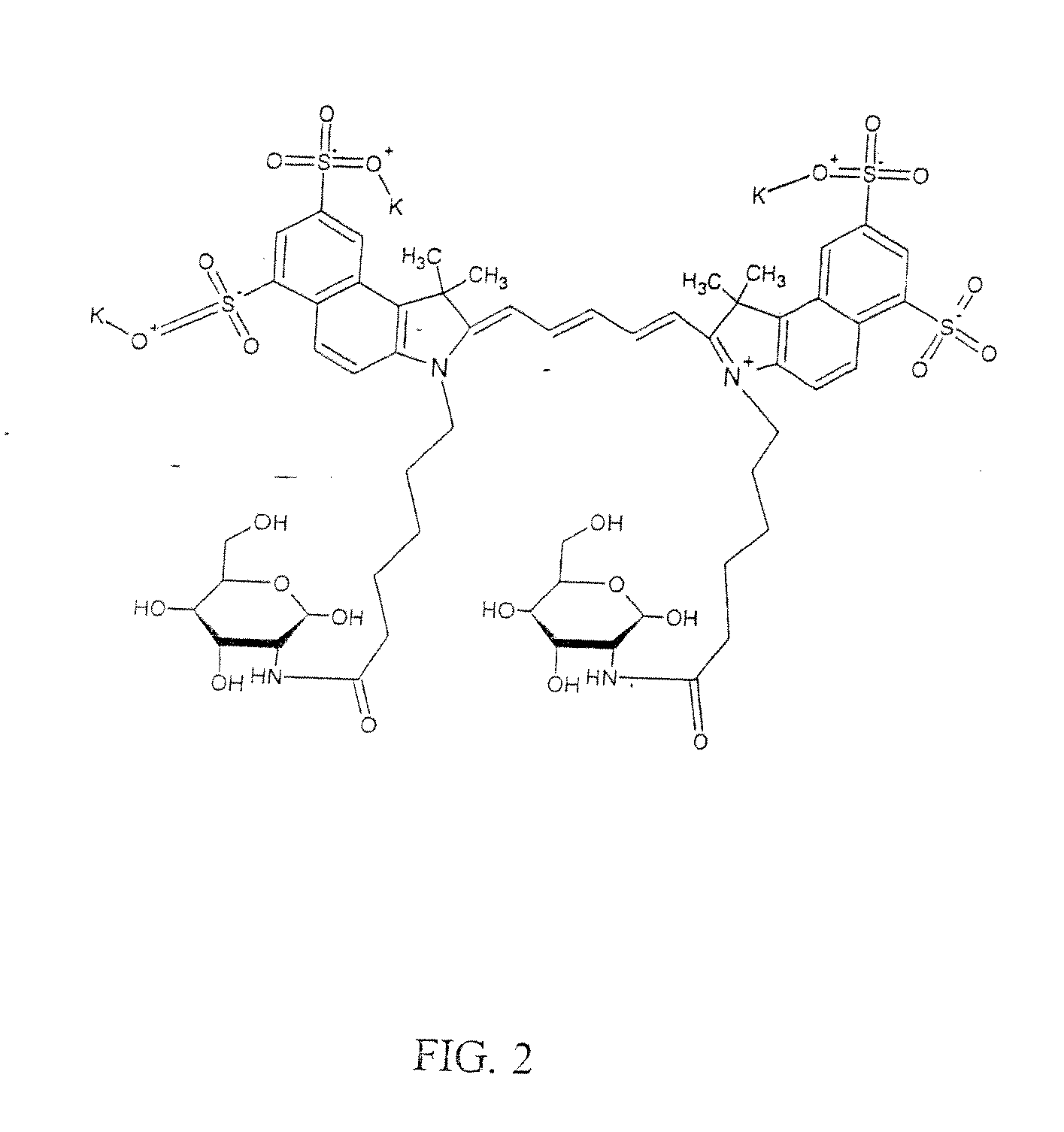Optical imaging probes
a technology of optical imaging and probes, applied in the field of optical imaging probes, can solve the problems of limited nature, inability to obtain specific molecular information using these modalities, and significant limitations of these imaging approaches
- Summary
- Abstract
- Description
- Claims
- Application Information
AI Technical Summary
Benefits of technology
Problems solved by technology
Method used
Image
Examples
Embodiment Construction
[0050]In one embodiment, the imaging agent (i.e., optical imaging probe) accumulates in diseased tissue at a different rate than in normal tissue. For example, the rate of accumulation of the agent can be at least 5%, 10%, 20%, 30%, 50%, 75%, or 90% faster in diseased tissue compared to normal tissue. Alternatively, the rate of accumulation of the agent can be at least 5%, 10%, 20%, 30%, 50%, 75%, or 90% slower in diseased tissue compared to normal tissue
[0051]In another embodiment, the imaging agent is metabolized in diseased tissue at a different rate than in normal tissue. For example, metabolism of the imaging agent can occur at a rate that is at least 5%, 10%, 20%, 30%, 50%, 75%, or 90% faster in diseased tissue compared to normal tissue. Alternatively, metabolism of the imaging agent can occur at a rate that is at least 5%, 10%, 20%, 30%, 50%, 75%, or 90% slower in diseased tissue compared to normal tissue.
[0052]In another embodiment, the imaging agent becomes trapped in cells...
PUM
| Property | Measurement | Unit |
|---|---|---|
| optical imaging | aaaaa | aaaaa |
| time | aaaaa | aaaaa |
| wavelength | aaaaa | aaaaa |
Abstract
Description
Claims
Application Information
 Login to View More
Login to View More - R&D
- Intellectual Property
- Life Sciences
- Materials
- Tech Scout
- Unparalleled Data Quality
- Higher Quality Content
- 60% Fewer Hallucinations
Browse by: Latest US Patents, China's latest patents, Technical Efficacy Thesaurus, Application Domain, Technology Topic, Popular Technical Reports.
© 2025 PatSnap. All rights reserved.Legal|Privacy policy|Modern Slavery Act Transparency Statement|Sitemap|About US| Contact US: help@patsnap.com



